Sheridan Nonprofit Director Leading State in Human Trafficking Prevention Education
Uprising Wyoming co-founder explains the nature of the problem in Wyoming and how to recognize it
Aug. 12, 2022
By Jen Kocher
Special to the Wyoming Truth
Human trafficking is on the rise in Wyoming—the last state in the nation to pass laws against it in 2013. Based on statistics gathered by National Human Trafficking Hotline, 11 cases of trafficking were reported in Wyoming in 2020 out of 47 residents who called. Sex trafficking accounted for the majority of those cases; 10 of those victims were women.
Experts acknowledge that these figures are low, as the vast number of incidents go unreported. The ability to identify trafficking and respond to it correctly are the largest barriers to reporting cases. This means understanding the nuances between prostitution and trafficking, as well as identifying forms of forced labor and helping victims access services.
Enter Terri Markham, 37, executive director and co-founder of Uprising Wyoming. Since launching the Sheridan-based nonprofit in 2019, Markham, a native Texan, has led the charge to deliver human trafficking prevention education, raise awareness and provide outreach. Her timing is impeccable: A 2020 study from the Wyoming Survey and Analysis Center (WYSAC) at the University of Wyoming found that human trafficking, which includes sex and labor trafficking, is an issue in most communities statewide.
The Wyoming Truth spoke with Markham about her work and the realities of human trafficking. What follows are excerpts from the interview.
In May 2021, you made news for your role in a sex trafficking training and subsequent sting operation in Rock Springs that yielded four arrests. Can you tell us more about that?
Markham: This sting operation was the practical application of skills learned through a three-day law enforcement training. We were fortunate to work with the Sweetwater County Sheriff's Office to pull off this operation.
Terri Markham is the co-founder and executive director of Uprising Wyoming, a Sheridan-based nonprofit that delivers human trafficking prevention education, raises awareness and provides community outreach. (Courtesy photo from Terri Markham).
What I am most proud of from that training/sting is the fact that we brought victim advocates and law enforcement together to train. They were able to learn from each other and work together during the sting. During our final debrief, it was clear to me that all of our learning objectives had been met, because I heard multiple officers make comments about how much more productive their work was by using a demand lens and focusing on buyers/traffickers versus using a prostitution lens that harms the victims.
How should a sprawling state like Wyoming tackle human trafficking?
Markham: Strategically! For Uprising, we had a three-tier plan. . . . our end goal was widespread prevention education for youth, but we couldn't just jump in and start talking to kids. . . We needed to work towards a higher level of community awareness and professional training first, so that youth had someone to turn to. We started by tackling professional education, targeting groups such as law enforcement, healthcare workers and educators. Then we began ramping up community awareness, hosting events and parent/caregiver trainings, before finally working directly with youth.
Tell us about the trainings for teens and juveniles.
Markham: Currently, we offer classes, workshops, programs and presentations for youth from elementary [school] age through college age. When you attend a 101-style informational training or presentation, you can expect to learn what trafficking is and actually looks like in your own community.
For our more in-depth training, we focus on the root causes of trafficking, which can heighten the risk of being exploited. We definitely talk about sextortion; in fact, it is a part of our presentations to 8th graders. . . Unfortunately, we are finding that 8th grade students are disclosing active sextortion cases and past sextortion cases to us when we broach the topic. It is our belief that it needs to be addressed even earlier.
We’ve all heard stories about women and children being abducted by strangers in vans in grocery store parking lots. Is this the reality in Wyoming?
Markham: No… Sure, there may be a very rare instance that this happens in a community, but by and large, it usually never looks like this. It looks more like a neighbor who is struggling financially or with addiction, and so they are selling their child to make ends meet. Or it looks like youth being groomed and exploited online, in some cases where they may not even know that they are a victim. It looks like illicit businesses that are taking advantage of employees right under our noses.
What’s the biggest myth about trafficking?
Markham: Most people tend to think that victims are only girls and women. But what we are seeing in Wyoming currently is a wave of online exploitation that is targeting young boys. We also know that LGBTQIA+ youth are at much higher risk for exploitation as well.
Overall, trafficking is not a female or victim-centered issue. It is, by and large, a male and demand-centered issue. If there wasn't a demand for commercial sex, there wouldn't be any trafficking. Demand stems from pornography addiction, and research shows the biggest consumers of porn and commercial sex are male…
What type of trafficking are you seeing in Wyoming?
Markham: We are definitely seeing increased identification of all types of human trafficking in Wyoming. In the last three months alone, we have received about six calls from victims in Wyoming, or agencies that had identified a victim, that were seeking services and help. Uprising does not serve victims of trafficking directly, but in all of these instances, we have been able to provide referrals to agencies outside of Wyoming. In one of these cases, we were able to make a referral for a minor victim in Campbell County, and the partnering agency was able to get them out of the state the following day.
What might people be surprised to learn about human trafficking?
Markham: That it can happen right in someone's home. In fact, by and large, the most disclosures that I have received from victims and survivors in Wyoming is familial trafficking. These cases often look like a person being sold right out of their home. This type of trafficking can actually thrive in a rural community.
How can people identify trafficking in their own communities?
Markham: The first tip I have is to get educated. Uprising is happy to try to meet the needs of community members who want to host a free 101 training. There are also many free online courses you can take. My favorite is … Learn How to End Human Trafficking course with Justice U. . . at learnwithjusticeu.com.
The second tip I have is to trust your gut. Trafficking usually does not look like what movies and media portray. . . . It tends to look more like your neighbor across the street or the student in your classroom. If your gut is telling you something is off, you should trust that. It never hurts to make a report and let a trained professional do the investigating.
The Wyoming Truth is a nonpartisan, nonprofit news operation dedicated to helping the community and fighting for the rights of local citizens. To sign up for a free subscription, or to make a donation, please go to www.wyomingtruth.org. Other media outlets are free to run this article as long as they credit the “Wyoming Truth.” If you have any tips about this issue or others, or for more information about the Wyoming Truth, contact us at info@wyomingtruth.org.


